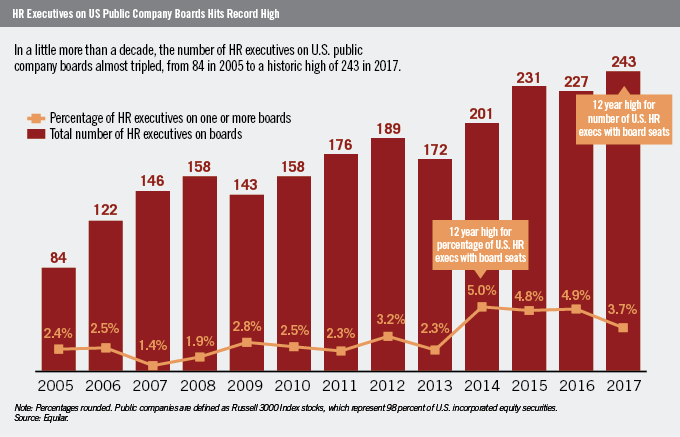In the past, when a business encountered a crisis, the CFO was beside the CEO to help handle it. The current state of the world — from the global pandemic to the nationwide protests about systemic racism — has given the chief people officer a similar opportunity.
While the chief people officer may handle return-to-office basics like providing masks and stocking an ample supply of hand sanitizer, they also face the more daunting specter of easing the stress of employees as they reintegrate into the workplace.
“A lot of questions that might have been seen as questions of etiquette or personal choice are now questions of safety,” said Arianna Huffington, co-founder of The Huffington Post and founder and CEO of Thrive Global, a behavior change tech company that has been working with many HR leaders during the pandemic.
Also read: Give managers the time they need to sharpen up their all-around skills
Chief people officers are dealing with the fundamental questions of putting people first, and now that is no longer abstract but very real for companies. “The health and well-being of employees for many companies was seen as a nice-to-have. Now more than ever, it is essential for the success of an organization, and that’s why HR leaders have such a critical role to play,” Huffington said.
Addressing the well-being of essential workers
Employees are looking at their workplace and employer as a source of trusted information and to help them with mental health solutions, Huffington said.At Walmart, Thrive Global is making its behavior change platform available for Walmart associates — including frontline teams at stores and distribution centers — and their families across the US.
If a company doesn’t address the stress of employees — whether that stress is caused by health concerns, financial worries or something else — the bottom line and the survival of the company itself may be impacted, she said. Like Johnson & Johnson CEO Alex Gorsky memorably said, she added, “Every CEO is a health CEO now.”
“HR leaders no longer have to convince the C-suite that employee well-being and mental health matters,” Huffington said. “But now comes the challenge of moving from awareness to action, as they must help their companies go from knowing what they need to address to actually doing it.”
We need to normalize talking about our mental health in the workplace, according to Ellyn Shook, chief leadership and human resources officer at Accenture, one of the companies Thrive has worked with. Having senior leaders set the tone for the rest of the organization is key to this goal.
“The most senior leaders in the company [can share] their challenges and how they are recharging and practicing self-care, because those are the things that actually pay off around mental wellness,” she said.
Also read: Unify those far away workplaces with global mobility tools
Relationships and conversations with other executives
The global leadership team at Bank of America has had to be incredibly nimble, creative and innovative in response to the challenges that 2020 has presented, according to Sheri Bronstein, chief human resources officer at Bank of America, another company Thrive has partnered with.
Also read: Human capital management: Enriching your human resources
“From the imperative to keep our 210,000 employees safe and healthy to recognizing the need for even more focus on diversity and inclusion, events of the past six months have led to more collaboration, learning and sharing between myself and my C-suite teammates than ever before,” she said.
Bronstein also highlighted the importance of CEO support as the company moves forward to support a healthy workforce. Support from Bank of America CEO Brian Moynihan has allowed Bronstein and her human resources team to take bold, swift actions as it responds to the pandemic and the health and safety concerns that employees may have.
These actions include “no layoffs through 2020 due to the pandemic, free, virtual access 24/7 to doctors, $100 a day to cover child- and elder-care expenses and a variety of resources to support the mental health of our employees and their families,” Bronstein said.
Shook also stressed the importance of building trust with other key stakeholders in the company. Executives working together to lead responsibly can help a company and its workforce come out of a crisis stronger and more resilient.

“As we discuss physical safety and psychological resiliency, returning to the workplace and actions to fight racism in our organizations, an underlying theme of many of my conversations with other [C-suite executives] is humanity and the opportunity and obligation that leaders have to elevate their most important source of competitive differentiation – their people – especially during times of crisis,” Shook said.
The opportunity to create lasting change
The lessons organizations have learned from dealing with these crises will have a lasting impact on how they approach HR matters moving forward, Bronstein said.
At Bank of America, she added, members of the C-suite will continue to collaborate with each other, “[maintaining] our focus on cultivating a diverse and inclusive culture, and offer programs, initiatives and partnerships that drive change.”
Shook compared the current state of possibilities for HR leadership to that of finance executives during the 2008 financial crisis. The chief people officer, much like the CFO of 2008, is a key leader in an organization right now, “guiding their organizations and people through these trying times where health, livelihoods, and equality are at stake, while also keeping a foot in tomorrow.”
“CHROs have always sat at an interesting crossroads to help their organizations elevate their people, or not – whether it be AI, a pandemic or inequity,” she said, adding the HR leaders who focus on people over process can navigate disruption better in the present and also help contribute to a better future.
At Accenture, for example, Shook said she and her colleagues have learned a lot over the past few months about how people work and how they can still collaborate and be innovative while physically distancing from each other.
Due to this newfound knowledge, she said, “we are [not] taking this as an opportunity to think about how we go back to what normal was.” and
“This is an opportunity for lasting change,” Shook added. “For modern HR leaders, this has been an accelerant to create a blueprint for the future of work, rethink the social contract and drive even greater value for our people, businesses and communities. And, for those HR leaders who are less progressive, it’s an important catalyst to begin to create a resilient organization that is prepared for whatever the future holds.“



